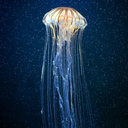Prevention of cerebral vasospasm by vasodilatory peptide maxadilan following subarachnoid hemorrhage in rabbits.
الكلمات الدالة
نبذة مختصرة
Maxadilan is a vasodilatory peptide isolated from the blood-feeding sand fly Lutzomyia longipalpis. Its vasodilatory activity, estimated by the formation of erythema on rabbit skin, is greater than those of calcitonin gene-related peptide, vasoactive intestinal polypeptide and pituitary adenylyl cyclase activating polypeptide (PACAP). We have recently demonstrated that maxadilan is a specific agonist for the PACAP type I receptor, which is widely distributed in brain. Therefore, we were interested in the vasodilatory effect of maxadilan on cerebral arteries and the possibility of its clinical use for the delayed cerebral vasospasm following subarachnoid (SAH). In the first experiment, 10(-10) mol/kg of maxadilan (in sterile water) was injected into the cisterna magna three days after the induction of experimental SAH in rabbits (n = 6). Maxadilan dilated spastic basilar arteries within 30 min of the injection, but not at 6 h. In the second experiment, to prolong the vasodilatory effect of maxadilan, tablets containing stearic acid, hydrogenated oil, lactose, hydroxypropylcellulose and 15 mg of maxadilan were prepared. In vitro testing showed that 60% of maxadilan could be released slowly within the initial five days. In vivo experiments were performed to implant the maxadilan tablet (n = 7) and the placebo tablet (n = 6) into the cisterna magna after the induction of experimental SAH in rabbits. The spastic response of the basilar artery was maximum on day three in the placebo-treated groups. In contrast, we observed no significant change in the arterial diameter until day five in the rabbits treated with maxadilan tablet. These data suggest that maxadilan may have therapeutic potency in treating cerebral vasospasm.


